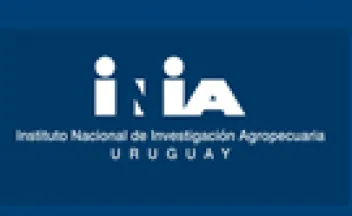Instituto Nacional de Investigación Agropecuaria
Modelling missing pedigree with metafounders and validating ssGBLUP evaluation for Uruguayan Holstein dairy cattle. [318]

ABSTRACT.- The objective of this study was to check the quality of single-step GBLUP (ssGBLUP) predictions in Uruguayan dairy cattle, with special focus on the modelling of missing pedigree defined as metafounders (MF).
Longevity in genetic evaluation of Holstein cows in Uruguay. [664].

ABSTRACT.- The objective of this study was to estimate variance components and to analyze the possibility of carrying out a genetic evaluation of the longevity trait in animals of the Uruguayan dairy production system of the Holstein breed. Longevity was defined as a binary trait with values of 1 and 0 whether or not the cow survived a lactation, respectively.
How ssGBLUP became suitable for national dairy cattle evaluations. [668].

ABSTRACT.- National dairy evaluations use mostly multistep methods, where a nongenomic BLUP evaluation is followed by extraction of pseudo-phenotypes, genomic analyses, and merging nongenomic and genomic evaluations. With genomic preselection and many females genotyped, pseudo-phenotypes are biased, and it is hard to accommodate female genotypes fully. Such problems were successfully solved in other species by ssGBLUP, but large biases and expensive computing were experienced in dairy. This paper documents several improvements that made ssGBLUP feasible for national dairy evaluations.
Differential hepatic mitochondrial function and gluconeogenic gene expression in 2 Holstein strains in a pasture-based system.

ABSTRACT: The objective of this study was to assess hepatic ATP synthesis in Holstein cows of North American and New Zealand origins and the gluconeogenic pathway, one of the pathways with the highest ATP demands in the ruminant liver. Autumn-calving Holstein cows of New Zealand and North American origins were managed in a pasture-based system with supplementation of concentrate that represented approximately 33% of the predicted dry matter intake during 2017, 2018, and 2019, and hepatic biopsies were taken during mid-lactation at 174 ± 23 days in milk.
Evaluation capacity building in response to the agricultural research impact agenda:Emerging insights from Ireland, Catalonia (Spain), New Zealand, and Uruguay.

ABSTRACT.- Performance-based funding and calls for public-funded science to demonstrate societal impact are encouraging public research organisations to evaluate impact, the so-called impact agenda. This paper explores evaluation methods of four fully or partially public-funded agricultural research organisations and how they are building evaluative capacity to respond to the impact agenda. Drawing on cross-organisational comparison of the readiness of each organisation to implement evaluation, the implications for improving evaluative capacity building (ECB) are discussed.
Evaluation capacity building in response to the agricultural research impact agenda: Emerging insights from Ireland, Catalonia (Spain), New Zealand, and Uruguay.

ABSTRACT.- Performance-based funding and calls for public-funded science to demonstrate societal impact are encouraging public research organisations to evaluate impact, the so-called impact agenda. This paper explores evaluation methods of four fully or partially public-funded agricultural research organisations and how they are building evaluative capacity to respond to the impact agenda. Drawing on cross-organisational comparison of the readiness of each organisation to implement evaluation, the implications for improving evaluative capacity building (ECB) are discussed.
La Red Tecnológica corregida y mejorada:entrevista.

Hace unos dos años se temió por su desaparición. La primera experiencia de la Red Tecnológica Sectorial RTS había llegado a su fin y no aparecían recursos para poner a andar una segunda etapa. Se abrió un período de incertidumbre, gestiones y negociaciones que, recientemente, permitió alumbrar una segunda Red, con otro nombre, más abierta, corregida y mejorada, que genera auspiciosas perspectivas. Santiago Fariña, Director del Programa Nacional de Lechería, INIA, nos explica qué cambió y porque debemos aguardar mejores resultados.
Paginación
- Página anterior
- Página 31
- Siguiente página
